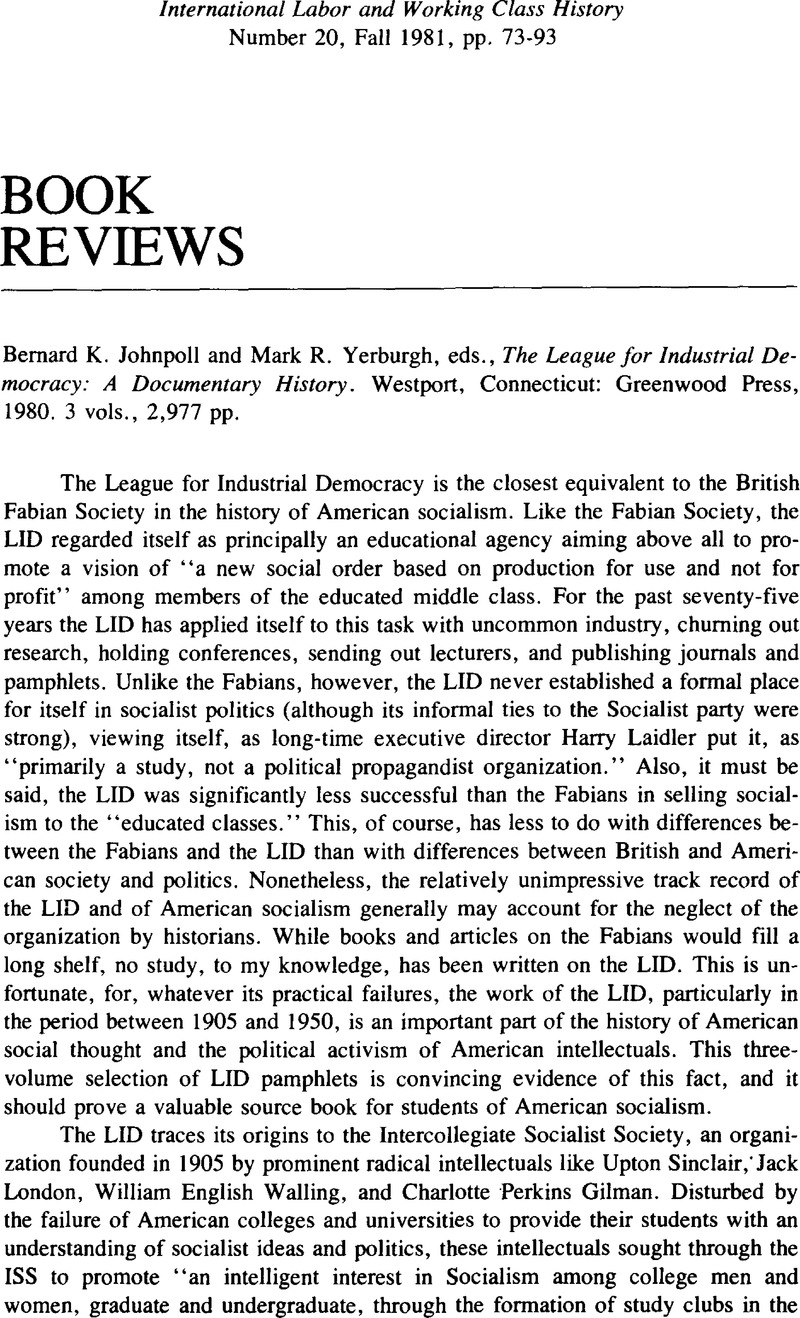No CrossRef data available.
Article contents
Bernard K. Johnpoll and Mark R. Yerburgh, eds., The League for Industrial Democracy: A Documentary History. Westport, Connecticut: Greenwood Press, 1980. 3 vols., 2,977 pp.
Published online by Cambridge University Press: 16 December 2008
Abstract

- Type
- Book Reviews
- Information
- Copyright
- Copyright © International Labor and Working-Class History, Inc. 1981
References
NOTES
1. Harrington, Michael, Fragments of the Century (New York, 1973), 145Google Scholar. The best account of this conflict is Kirkpatrick Sale, SDS (New York, 1973), 28–41, 60–70, 236–240Google Scholar. Sale's appendix on the roots of SDS is the best account of the student organizations in the LID, but see also Schriffrin, Andre, “The Student Movement in the 1950's: A Reminiscence,” Radical America, 2 (05–06 1968), 26–41.Google Scholar
2. See my “Tribune of the Technostructure: The Popular Economics of Stuart Chase,” American Quarterly, 32 (1980), 387–408.CrossRefGoogle Scholar
3. A notable exception was philosopher John Dewey who attacked the capitalist division of labor precisely because it separated “brain” and “hand” work. It was this separation that to him defined alienating work. See, for example, Individualism Old and New (New York, 1930), 131–132Google Scholar. The reunion of brain and hand work was for Dewey a principal tenet of “industrial democracy.”




